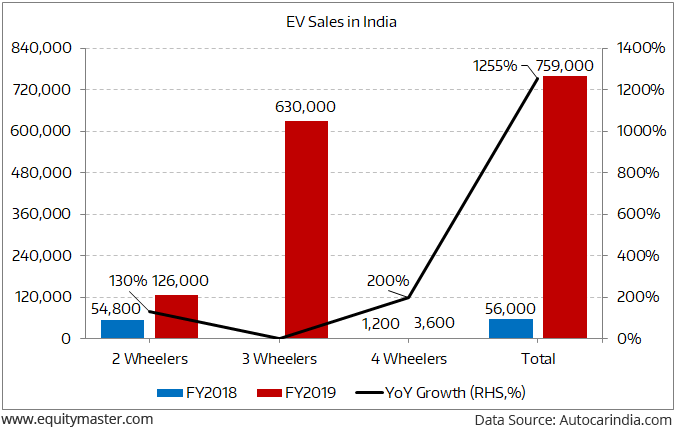India's Third Giant Leap
This Could be One of the Biggest Opportunities for Investors
- Home
- Todays Market
- Indian Stock Market News September 6, 2019
Sensex Opens Over 190 Points Up; IT and Telecom Stocks Lead Fri, 6 Sep 09:30 am
Asian share markets are higher today as Japanese and Hong Kong shares show gains. The Nikkei 225 and the Hang Seng are both up 0.6%. The Shanghai Composite is trading up by 0.2%. US stocks surged on Thursday on expectations of a de-escalation in trade tensions after Washington and Beijing agreed to hold high-level talks next month, while strong US economic data eased fears of a domestic slowdown.
Back home, India share markets opened higher tracking global peers. The BSE Sensex is trading up by 197 points while the NSE Nifty is trading up by 43 points. The BSE Mid Cap index and BSE Small Cap index opened up by 0.1% and 0.2% respectively.
Except realty stocks, oil & gas and healthcare stocks, all sectoral indices have opened the day on a positive note with IT stocks and telecom stocks witnessing maximum buying interest.
The rupee is currently trading at 71.77 against the US$.
Extending the gains into the second consecutive session, the Indian rupee closed 28 paise higher at 71.84 per dollar on September 5.
The Indian rupee clawed back some lost ground on September 4, gaining 27 paise to settle at 72.12 against the US dollar in line with a recovery in domestic equities.
In the year so far, the rupee has weakened 2.9%, while foreign investors have bought nearly US$6.6 billion in Indian equities and US$4.5 billion in debt.
Speaking of currencies, Vijay Bhambwani, editor of Weekly Cash Alerts, tells you the main reasons why not to trade commodities and currencies the same way you would trade equities. Here's an excerpt of what he wrote...
- Currencies are traded in pairs and the most liquid is the USDINR. Currencies are traded in four decimal points just as bonds are. The international derivative trader's association has indicated that forex may be traded in 6 decimals in the coming few years.
It takes months sometimes for the currency pair to pass the next round figure, say from 70 to 71.
Can you really trade commodities and currencies alike or for that matter, equities and currencies alike? Definitely not!
To know more, you can read Vijay's entire article here: Is Trading in Equities, Commodities, and Currencies the Same?
Moving on to the news from the automobiles sector. As per an article in a leading financial daily, Mahindra & Mahindra (M&M) is cutting down on its investments by around 5% to Rs 8-10 billion from its overall investment plan of Rs 180 billion till 2022 due to slowdown in the industry.
In May, the company had announced that it plans to invest Rs 180 billion over the next three years, including Rs 120 billion on capex.
The company stated that there is a concern in the auto industry because if auto sales fall, many others fall. If the industry does not turn back to positive growth for the remaining part of the months of the fiscal year, they may see more layoffs.
Further, while M&M has not slowed down on investments on new products, it has deferred investments on other activities such as capacity enhancement and discretionary capex like repair and maintenance.
The company that recently underwent a plant shut-down exercise to adjust production also said that if sales do not pick up in the festive season, it may have to undertake the exercise again in October.
Note that multiple factors have affected the auto sector of late.
The liquidity crisis faced by NBFCs, regulatory changes leading to increased costs, new emission norms...they have all taken their toll.
Automobile sales have fallen every month for almost a year now, except for October when the numbers were flat. In June, nine out of India's 11 main passenger vehicle makers reported a double-digit decline in sales.
Reports state that many dealers who have recently entered the auto industry are finding it difficult to manage their repayment obligations. Banking industry experts estimate the total outstanding loans to automobile dealers to be in the range of Rs 700-800 billion.
However, it is interesting to note that despite the slowdown in the auto sector, the sales volume of electric vehicles (EVs) are growing at a robust pace.
Have a look at the chart below:
Electric Vehicle Sales on a High Growth Trajectory!
Electric-2 wheelers sales volume registered 130% YoY growth in FY19. 4-wheeler EVs grew by 200% YoY.
Similarly, electric three-wheelers reported the highest sales volume of 630,000 units. It is important to note that the electric three-wheeler industry has been growing without government support.
The base is quite low compared to the internal combustion engine (ICE) vehicle sales. However, you cannot ignore the growing momentum in EV sales.
The recently announced government incentives will give a further boost to EV sales.
The coming one year will be a real test for India's auto companies.
It will also tell us if this slowdown is temporary or if there has been a structural change in the sector.
In our view, companies in the sector adapting their business models to the rapidly changing environment will survive and thrive.
To know what's moving the Indian stock markets today, check out the most recent share market updates here.
For information on how to pick stocks that have the potential to deliver big returns, download our special report now!
Read the latest Market Commentary



Equitymaster requests your view! Post a comment on "Sensex Opens Over 190 Points Up; IT and Telecom Stocks Lead". Click here!
Comments are moderated by Equitymaster, in accordance with the Terms of Use, and may not appear
on this article until they have been reviewed and deemed appropriate for posting.
In the meantime, you may want to share this article with your friends!